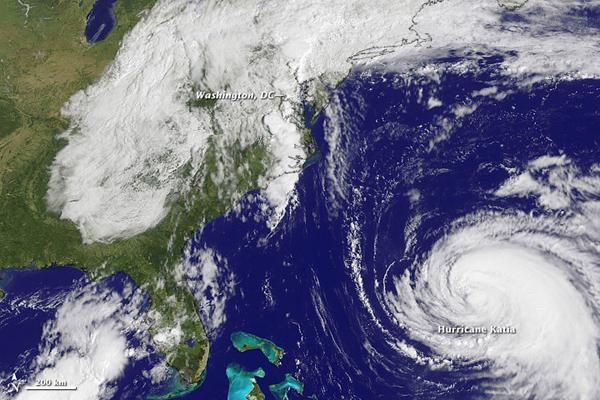
Family Portrait: Remnants of Lee & Hurricane Katia

One week after Hurricane Irene battered the East Coast of the United States with damaging winds and flooding rain, a less-touted, plodding storm system soaked the eastern half of the country with more widespread and nearly as abundant rain as its predecessor. Tropical Storm Lee had a short official life as a named storm, but its effects lasted nearly a week.
Officially declared a tropical storm late on September 2, Lee reached its peak sustained winds of 57 miles (92 kilometers) per hourwell below hurricane forceon September 3 before making landfall on the Gulf Coast. By September 5, the storm was no longer a tropical depression, yet it was only beginning its march from Louisiana to soggy New England and the Mid-Atlantic.
The satellite image above shows the remnants of Lee and several other weather systems mashed together in the eastern U.S. at 14:02 Universal Time (10:02 a.m. Eastern Daylight Time) on September 7, 2011. Hurricane Katia whirls well out in the Atlantic Ocean, but plays a key role in stalling the storms over land.
Watch the progress of the weather systems from 13:02 Universal Time (9:02 a.m. EDT) on September 2 through 11:32 UTC (7:32 a.m. EDT) on September 9, 2011. The still image and the animation were built from images acquired every 515 minutes by the GOES-East satellite.
- Three Storms Keep Hurricane Hunters Busy
- Months After Disappearing, La Nina Returns
- How a Hurricane Impacts the Ocean
Sign up for the Live Science daily newsletter now
Get the world’s most fascinating discoveries delivered straight to your inbox.












